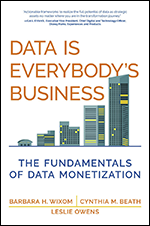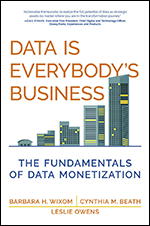Benford's Law: Applications for Forensic Accounting, Auditing, and Fraud Detection
- 6h 38m
- Mark J. Nigrini
- John Wiley & Sons (US)
- 2012
Benford's Law gives the expected patterns of the digits in the numbers in tabulated data such as town and city populations or Madoff's fictitious portfolio returns. Those digits, in unaltered data, will not occur in equal proportions; there is a large bias towards the lower digits, so much so that nearly one-half of all numbers are expected to start with the digits 1 or 2. These patterns were originally discovered by physicist Frank Benford in the early 1930s, and have since been found to apply to all tabulated data. Mark J. Nigrini has been a pioneer in applying Benford's Law to auditing and forensic accounting, even before his groundbreaking 1999 Journal of Accountancy article introducing this useful tool to the accounting world. In Benford's Law, Nigrini shows the widespread applicability of Benford's Law and its practical uses to detect fraud, errors, and other anomalies.
- Explores primary, associated, and advanced tests, all described with data sets that include corporate payments data and election data
- Includes ten fraud detection studies, including vendor fraud, payroll fraud, due diligence when purchasing a business, and tax evasion
- Covers financial statement fraud, with data from Enron, AIG, and companies that were the target of hedge fund short sales
- Looks at how to detect Ponzi schemes, including data on Madoff, Waxenberg, and more
- Examines many other applications, from the Clinton tax returns and the charitable gifts of Lehman Brothers to tax evasion and number invention
Benford's Law has 250 figures and uses 50 interesting authentic and fraudulent real-world data sets to explain both theory and practice, and concludes with an agenda and directions for future research.
About the Author
Mark J. Nigrini, PhD, is an associate professor at The College of New Jersey in Ewing, New Jersey, where he teaches auditing and forensic accounting. He has also taught at other institutions, including Southern Methodist University in Dallas, Texas.
Mark is a Chartered Accountant and holds a B.Com. (Hons) from the University of Cape Town and an MBA from the University of Stellenbosch. His PhD in accounting is from the University of Cincinnati, where he discovered Benford's Law. His dissertation was titled "The Detection of Income Tax Evasion through an Analysis of Digital Distributions." His minor was in statistics, and some of the concepts studied in those statistics classes are used in this book.
Mark is the author of Forensic Analytics, published by Wiley in 2011. Forensic Analytics reviews and describes substantive and rigorous tests that are used to detect fraud, errors, estimates, or biases in corporate and government data. The tests include high-level data overviews together with highly focused tests that give small samples of highly suspicious transactions. Forensic Analytics also shows how Access, Excel, and PowerPoint can be used in a forensic setting.
After Mark finished his dissertation, it took a while for corporate America to notice his work. The breakthrough came in 1995 when his work was publicized by an article titled "He's Got Their Number: Scholar Uses Math to Foil Financial Fraud" in the Wall Street Journal. This was followed by other articles on his work in the national and international media, including the Financial Times, the New York Times, Der Spiegel, Businessweek, and USA Today. A recent article that discussed Mark's forensic work was published in Canada's Globe and Mail, and he was also recently cited as a Benford's Law "expert" in the Frankfurter Allgemeine Zeitung. Mark's radio interviews have included the BBC in London and NPR in the United States. His television interviews have included an appearance on NBC's Extra.
Mark has published papers on Benford's Law, auditing, and accounting in academic journals, such as the Journal of the American Taxation Association, Auditing: A Journal of Practice and Theory, the Journal of Accounting Education, the Review of Accounting and Finance, the Journal of Forensic Accounting, and the Journal of Emerging Technologies in Accounting. He has also published in scientific journals, such as Mathematical Geology, and pure mathematics journals, such as the International Journal of Mathematics and Mathematical Sciences. Mark has also published articles in practitioner journals, such as Internal Auditor and the Journal of Accountancy. Mark's current research deals with advanced theoretical work on Benford's Law and the legal process surrounding fraud convictions.
Mark has presented many academic and professional seminars for accountants in the United States and Canada with the audiences primarily made up of internal auditors, external auditors, and forensic accountants in the public and private sectors. He has presented several conference plenary and keynote sessions with his talk titled "Benford's Law: The Facts, the Fun, and the Future." The release date of Benford's Law is planned to coincide with a keynote session to be delivered by Mark at the 2012 Annual Williamsburg Fraud Conference in April, 2012. Mark has also presented seminars overseas in the United Kingdom, the Netherlands, Germany, Luxembourg, Sweden, Thailand, Malaysia, Singapore, and New Zealand. A PWC presentation in Zurich, Switzerland, is scheduled for May, 2012. Mark is also scheduled to present Benford's Law sessions in June, 2012 at the 2012 Annual ACFE Fraud Conference, and the 2012 NACVA Annual Consultants' Conference.
In this Book
-
Introduction and Mathematical Foundations
-
Theorems, Truisms, and a Little Trivia
-
More Formulas and Facts, and a Little Fibonacci
-
Primary Benford's Law Tests
-
Advanced Benford's Law Tests
-
Associated Benford's Law Tests
-
Assessing Conformity to Benford's Law
-
Examples of Fraudulent Data
-
Fraudulent Financial Statements, Part I
-
Fraudulent Financial Statements, Part II
-
Madoff and Other Ponzi Schemes
-
Earth Science and Income Tax Applications
-
Future Directions And Conclusions




